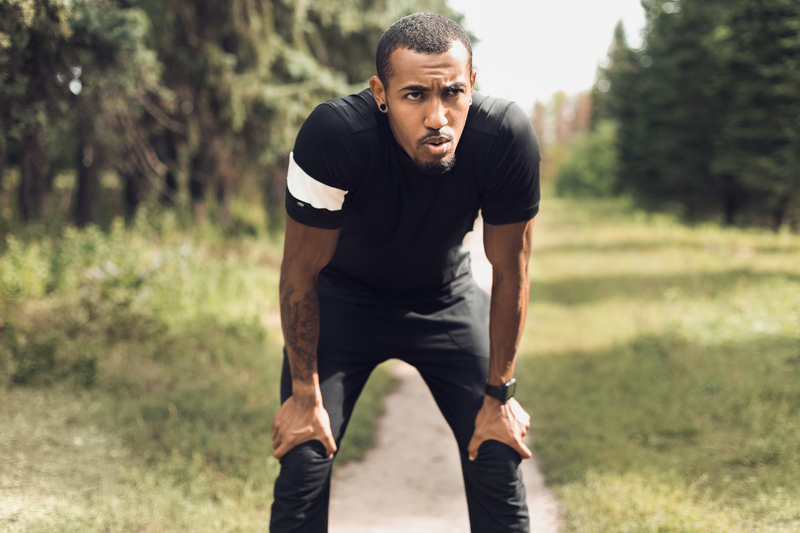What is Lung Training? And Can it Boost Your Overall Health?

Wouldn’t it be nice if you could harness the power of your breathing to help you increase your performance? You may be interested to learn that using lung training may enable you to do exactly that!
What Are The Lungs?
We all know breathing is obviously important and the lungs are what help us perform this vital function, but have you ever given a second thought to exactly what the lungs do and how they function?
The lungs are part of what’s called the “respiratory system” and consist of twin organs, protected within your ribcage, that help you process the oxygen you breathe in. The lungs are spongy elastic sacs which contain tubes (bronchi, bronchioles) and air sacs (alveoli) that help your blood absorb the oxygen molecules and distribute them to your muscles.
Which Muscles Are Used When Breathing?
But breathing doesn’t just stop with the lungs. There are respiratory muscles as well. It’s important to note the muscles you use when you take a breath. It’s not just your lungs at work. There are several muscles that enable you to breathe, including:
- The Diaphragm—this is the sheath of muscle that separates your thorax and your abdomen. It’s the main muscle that assists with breathing. When your diaphragm is contracted, your lungs are able to expand, allowing you to draw in a breath.
- Intercostal muscles—these are the muscles between the ribs which help expand and contract your ribcage to allow your lungs to fill with air.
- Abdominal muscles—these all contribute to expanding and contracting of the lungs by helping raise and lower the ribcage.
- Muscles in the neck and collarbone area can also assist in breathing.
What Is Lung Training?
Lung training, also called respiratory training, is working to increase the function of the muscles that assist in breathing in order to feel better, relieve symptoms of various conditions that affect breathing (such as asthma, chronic obstructive pulmonary disease, bronchitis, and emphysema), and to improve sports performance.
Learning to breathe more deeply will increase your lung capacity and enable you to get more oxygen into your bloodstream than you normally would. Respiratory muscle training can help you achieve this type of deeper and more effective breathing.
Additionally, you can employ both resistance training and endurance training to build up your lung capacity with both exercise and special devices designed to assist with training the lungs and associated muscles.
Why Should You Try Lung Training?
Training your respiratory system can help you:
- Breathe more easily
- Breathe more deeply
- Increase your lung capacity
- Get more oxygen to your muscles
- Improve sports performance
- Help to lessen symptoms of breathing-related health issues
Try These Exercises to Train Your Lungs
1. Pursed Lip Breathing. Begin by sitting up straight and taking in a big breath through your nose. Pause and then purse your lips to make it slightly difficult for the air to escape and blow your breath out slowly through your lips. This exercise will help strengthen your breathing muscles.
2. Belly Breathing. This type of breathing is often employed in practices like yoga and meditation. Also known as diaphragmatic breathing, this type of deep breathing allows air to enter your belly which helps to strengthen the diaphragm, which in turn will help you breathe more easily.
Begin by sitting comfortably and breathing in through your nose. As you do this, place a hand on your stomach to feel it rise as it fills with air. Breathe out slowly using the pursed lip breathing from above.
3. Rib Stretch. This exercise simply involves holding your breath in your lungs. Begin by standing upright with your hands on your hips. Take in a full breath and hold it. Try to hold your breath for 30 seconds if you can. You may need to start by holding it for a shorter period of time and working your way up to longer intervals.
4. Regular Exercise. Believe it or not, regular resistance training can help make your breathing more effective. When you exercise, you help your circulatory system bring more oxygen to the muscles. This reduces the burden of supplying oxygen on the lungs and allows for better, easier breathing.
Respiratory Muscle Trainers
So, does lung training really have the ability to enhance your physical performance and your health? It does! Using a breathing apparatus can help you increase your performance by making your respiratory muscles stronger and more efficient.
Resistance training devices can be:
- Passive flow resistance (for example, forcing you to breathe through your nose instead of your mouth because the passageways are smaller).
- Dynamic flow resistance (you can change the amount and pressure of the air).
- Threshold—you have a pressure threshold valve which you have to open or close with your breathing.
- Threshold IMT (inspiratory muscle training)—this forces you to breathe in strongly enough to open a valve and let air in.
- Threshold PEP (positive expiratory pressure)—this forces you to breathe out strongly enough to open a valve and let air out.
There are several types of respiratory devices you can use to work on your lung training:
Powerbreathe—this is a device that uses a pressure loaded inspiratory valve and an unloaded expiratory flap valve to help you strengthen your breathing stamina and strength.
Training Mask—you may have encountered folks wearing these while training at the gym. The idea is similar to walking on the treadmill with a weighted vest on. Such a mask regulates the amount of air (load of air) that is allowed to flow to your lungs. This helps you to develop greater stamina and endurance with regular use.
Powerlung—this apparatus trains your lungs and respiratory muscles just like you would with weight training a muscle. You are able to progressively adjust the amount of resistance and increase it over time as you get stronger.
Whether you use one of these respiratory devices or learn to control your breathing with the exercises above, learning to train your lungs can help them better function and increase capacity, helping ramp up your performance.




 7 Signs Your Body is Seriously Low on Collagen (not just wrinkles)
7 Signs Your Body is Seriously Low on Collagen (not just wrinkles) Health Expert: "Turmeric Doesn't Work (unless...)"
Health Expert: "Turmeric Doesn't Work (unless...)" 3 Warning Signs Your Probiotic Supplement is a Total Waste
3 Warning Signs Your Probiotic Supplement is a Total Waste

